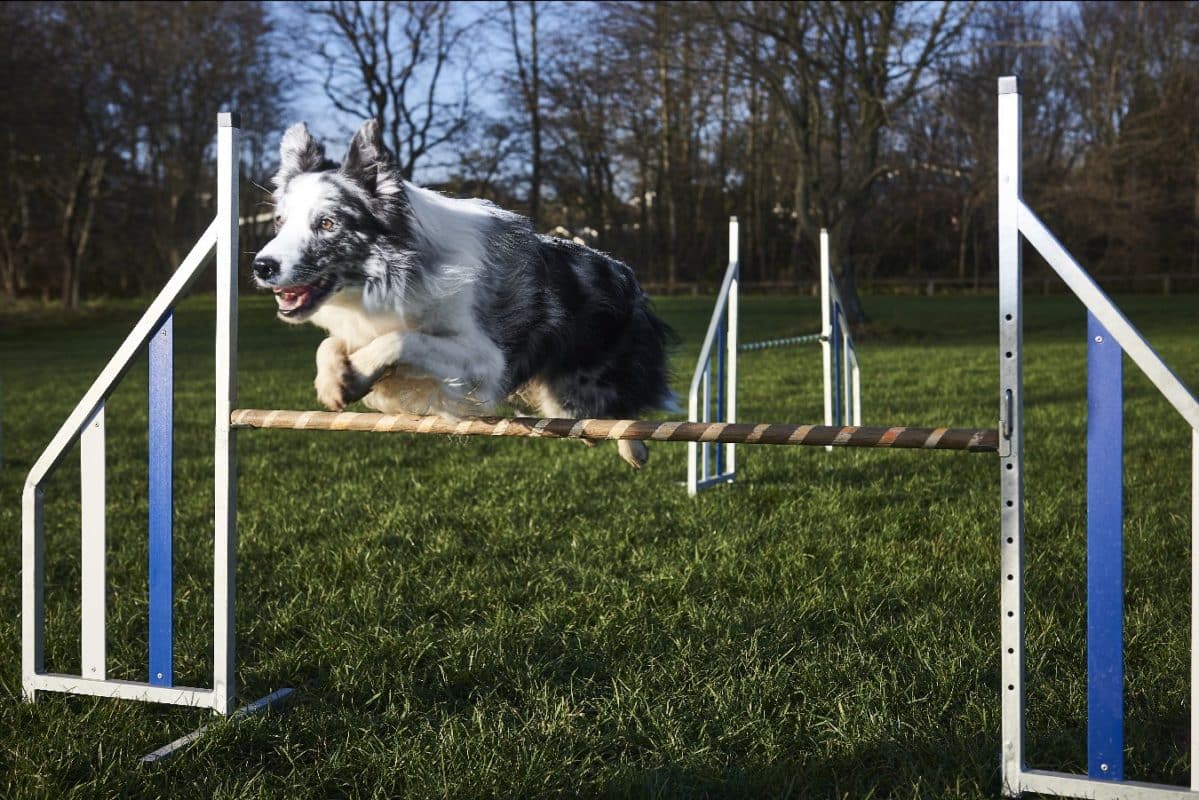Everything, Dogs
The Sport of Dog Agility
Dogs can be athletes too. In dog agility competitions, dogs negotiate obstacles while following their handlers’ directions. Judges award points for speed and accuracy, and they hand out fault points for mistakes on the course. Dogs gain skills, confidence, and an increased fitness level while playing in a giant doggie playground.
Dog agility is for humans as well as for dogs. It’s a spectator event and an opportunity for people and their canine companions to bond through training and practice time together.
There are dog agility forums, chat rooms, mailing lists, and clubs. You can get dog agility clipart, course designer programs, and scoreboard and record management programs for your computer. You can learn from books and videos about dog agility, and you can wear your interest with dog agility T-shirts.
Dog agility is popular in the US, Canada, numerous European countries, Australia (where it’s a national sport), and other parts of the world.
The history of dog agility
Dog agility began as a spectator sport in England for a filler at Crufts Dog Show. When show committee member John Varley was asked to develop something to entertain spectators between events, he drew on his experience with show horse jumping. He also recruited dog trainer Peter Meanwell to help set up the course, and the event was staged in February 1978.
The audience loved it, and dog agility competitions began to take place in various parts of England. In 1986, the United States Dog Agility Association (USDAA) was founded in Texas.
Dog agility is the fastest-growing dog sport in the US and throughout the world.
Dog requirements
Dogs that take part in dog agility competitions must be obedient and attentive off-leash as well as on-leash. They need to be in good physical condition, which requires regular strenuous exercise with their handlers.
While most competitors are registered purebreds, unregistered purebred dogs can take part if they have an Indefinite Listing Privilege (ILP) number from the American Kennel Club. Australian shepherds, shelties, spaniels, and poodles are known for their ability in dog agility competitions. Dogs that don’t do as well include breeds with short legs and those whose physical traits limit their breathing, such as English bulldogs.
Dog agility courses
Dog agility courses are obstacle courses with the obstacle sequence prescribed by the judge. Obstacles are designed to be safe as well as interesting. Jump bars are easily dislodged to prevent injury, and the surfaces of contact obstacles have rough surfaces for traction. Each course is different. Dogs are required to navigate the obstacles off-lead under directions from their handlers.
Dogs compete in novice, intermediate, and advanced course levels and in categories determined by their height at the shoulders. Jump heights are based on the height of the dogs. As with equestrian competitions, scores are based on speed and accuracy. The objective is to have the fastest course completion time and the least number of course faults (points deducted).
Typical types of agility obstacles
Jumps As with equestrian show jumping, courses have a variety of jump types:
- Standard jumps One row of poles to clear
- Double jumps Jumps with two sets of poles to be jumped together
- Spread jumps Poles spread horizontally as well as vertically
- Long jumps Jumps that aren’t high but are wide
- Tire jumps A suspended tire to jump through
Contact obstacles: see-saws, dog walks, and cross-overs Dogs must walk up, along, and down narrow planks and get off the obstacle when they are in the yellow contact zone at the other end. On see-saws, dogs walk up the see-saw until it tilts down and then walk down and exit in the yellow contact zone.
A-frames A-frame obstacles look like the roof of an A-frame house. Dogs climb up one side and then work their way down the other side, staying on the obstacle until they reach the yellow contact zone at the bottom.
Tunnels Tunnels are standard open pipe tunnels or collapsible tunnels, which are open at one end with part of the tunnel made of fabric.
Weave poles Competitions have sets of six or 12 poles for dogs to weave around.
Pause tables Dogs must jump onto the table and lie on it for five seconds.
The AKC has photos of agility obstacles and dogs.
North American agility trials organizations
Competition rules and regulations may vary for each organization.
- United States Dog Agility Association (USDAA)
- The North American Dog Agility Council (NADAC)
- The Agility Association of Canada (AAC)


